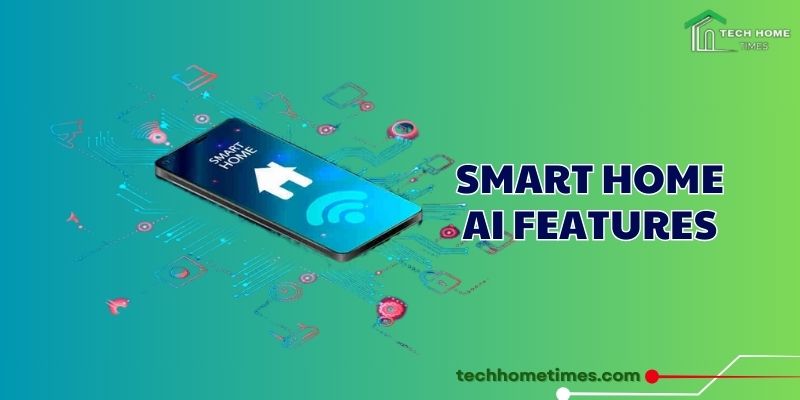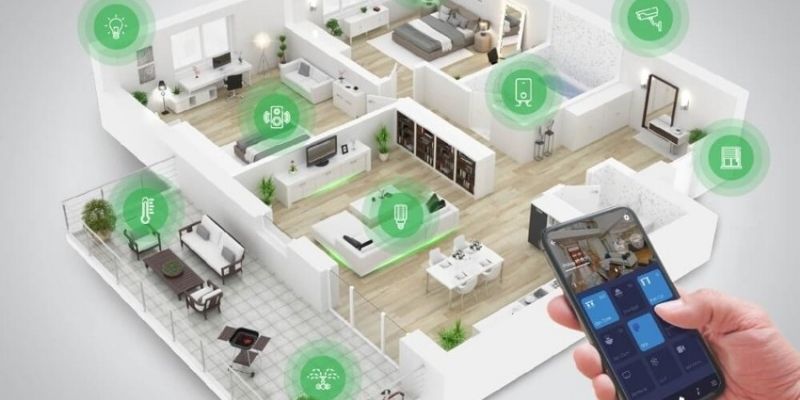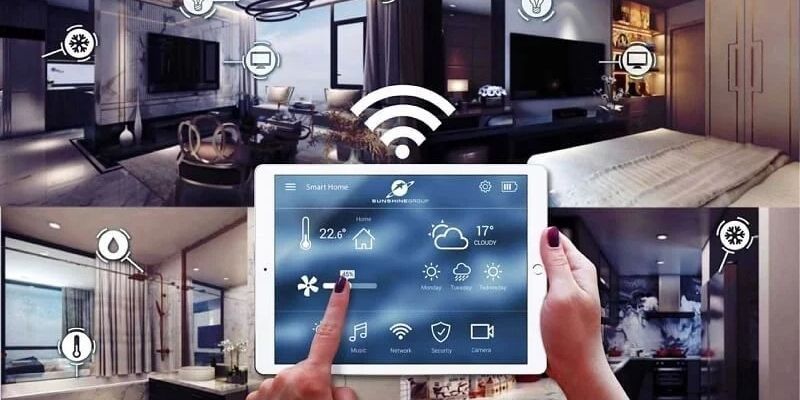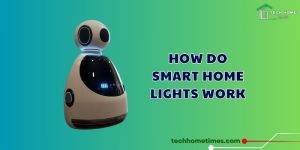Smart Home AI Features for Modern Living

The integration of Artificial Intelligence (AI) into smart home technology is no longer a futuristic fantasy but a tangible reality, bringing forth a suite of smart home AI features that are fundamentally reshaping how we interact with our living spaces. This analysis delves into the core smart home AI features.
Contents
- 1 What are Smart Home AI Features?
- 2 AI-Powered Voice Assistants and Natural Language Processing
- 3 Intelligent Home Management and Predictive Automation
- 4 Enhanced AI Security Features
- 5 AI-Driven Climate Control and Air Quality Management
- 6 Seamless Integration and Personalized Experiences
- 7 Sustainability and Energy Efficiency Powered by AI
What are Smart Home AI Features?

At its core, smart home AI features represent the application of artificial intelligence algorithms and machine learning models within a connected home environment. Unlike traditional smart home systems that rely on pre-programmed rules and basic sensor data, AI-powered features can learn user behavior, analyze complex data patterns, make intelligent predictions, and autonomously adapt to changing circumstances.
This imbues the smart home with a degree of “intelligence” that allows it to anticipate needs, optimize performance, and provide a truly personalized and seamless living experience. These features leverage various AI techniques, including natural language processing (NLP), computer vision, machine learning (both supervised and unsupervised), and predictive analytics, to enhance the functionality and user-friendliness of smart home devices and systems.
AI-Powered Voice Assistants and Natural Language Processing
One of the most prominent smart home AI features is the integration of sophisticated voice assistants powered by Natural Language Processing (NLP). These AI entities, such as Amazon Alexa, Google Assistant, and Apple Siri, have evolved from simple voice command interpreters to intelligent conversational partners capable of understanding complex queries, contextual nuances, and even carrying out multi-step instructions.
NLP allows users to interact with their smart home devices in a more natural and intuitive way, controlling lights, thermostats, entertainment systems, and security devices simply through voice commands. Furthermore, AI enables these assistants to learn individual voices, personalize responses, and even proactively offer relevant information or suggestions based on learned routines and calendar events.
The ongoing advancements in NLP continue to refine the accuracy, fluency, and understanding capabilities of these voice interfaces, making them an increasingly central control hub for the modern smart home.
Intelligent Home Management and Predictive Automation

Beyond voice control, smart home AI features are revolutionizing home management through intelligent automation and predictive capabilities. AI algorithms can analyze data from various smart devices – occupancy sensors, environmental monitors, appliance usage patterns – to learn the rhythms of the household and automate tasks proactively.
For instance, AI can learn when residents typically wake up and automatically adjust lighting and temperature accordingly, or it can detect when a room is unoccupied and turn off lights and appliances to conserve energy. Predictive automation takes this a step further, anticipating future needs based on learned behavior and external factors like weather forecasts.
An AI-powered sprinkler system, for example, might adjust its watering schedule based on predicted rainfall, while an intelligent thermostat could pre-cool the house before residents typically arrive home on a hot day. This level of intelligent automation minimizes manual intervention and optimizes the home environment for comfort and efficiency.
Enhanced AI Security Features
Security is a paramount concern for homeowners, and smart home AI features are significantly enhancing the capabilities of smart security systems. AI-powered security cameras can distinguish between people, pets, and vehicles, reducing false alarms triggered by innocuous movements. Facial recognition technology, with appropriate privacy safeguards, can identify familiar faces and alert homeowners to unknown individuals.
AI algorithms can also analyze patterns in sensor data to detect anomalies that might indicate a security breach, such as unusual door or window activity. Furthermore, AI can enable proactive security measures, such as automatically locking doors at certain times or sounding an alert if suspicious activity is detected outside the home.
The continuous learning capabilities of AI allow these security systems to become more accurate and effective over time, providing a more robust and reliable layer of protection for the modern home.
AI-Driven Climate Control and Air Quality Management

Maintaining a comfortable and healthy indoor environment is another area where smart home AI features are making significant strides. Intelligent thermostats leverage AI to learn individual temperature preferences and automatically adjust settings to optimize comfort and energy efficiency.
They can also take into account factors like occupancy, weather patterns, and even the thermal characteristics of the home to create personalized climate control schedules. Beyond temperature, AI is also being applied to air quality management. Smart air purifiers equipped with AI can monitor air quality levels in real-time, identify pollutants, and automatically adjust their filtration speed to maintain a healthy indoor environment.
Some systems can even provide insights into air quality trends and alert homeowners to potential issues. This AI-driven approach to climate control and air quality management not only enhances comfort but also contributes to energy savings and improved well-being.
Seamless Integration and Personalized Experiences
A key advantage of smart home AI features is their ability to facilitate seamless integration between different smart devices and create truly personalized experiences. AI algorithms can analyze user interactions and preferences across various devices to understand individual needs and tailor the smart home environment accordingly.
For example, an AI-powered system might learn a user’s preferred lighting levels and music settings for different times of the day or activities, and automatically adjust these settings when the corresponding conditions are met. AI can also help bridge the gap between disparate smart home ecosystems, enabling devices from different manufacturers to work together more harmoniously. This level of seamless integration and personalization creates a more intuitive and user-centric smart home experience, where technology adapts to the individual rather than the other way around.
Sustainability and Energy Efficiency Powered by AI

In an increasingly environmentally conscious world, smart home AI features are playing a crucial role in promoting sustainability and energy efficiency. As mentioned earlier, AI-powered thermostats and lighting systems can optimize energy consumption based on occupancy, usage patterns, and environmental factors.
AI algorithms can also analyze appliance usage to identify energy-intensive devices and provide insights into potential energy savings. Smart grids and AI-powered energy management systems can even help homeowners take advantage of time-of-use electricity tariffs and optimize their energy consumption accordingly. By leveraging the analytical and predictive capabilities of AI, smart homes can become more energy-efficient, reducing both utility bills and environmental impact.
To Tech Home Times, the integration of AI into smart home technology is ushering in a new era of intelligent living. Smart home AI features, ranging from sophisticated voice assistants and predictive automation to enhanced security and AI-driven climate control, are transforming our homes into more convenient, comfortable, efficient, and secure environments.






